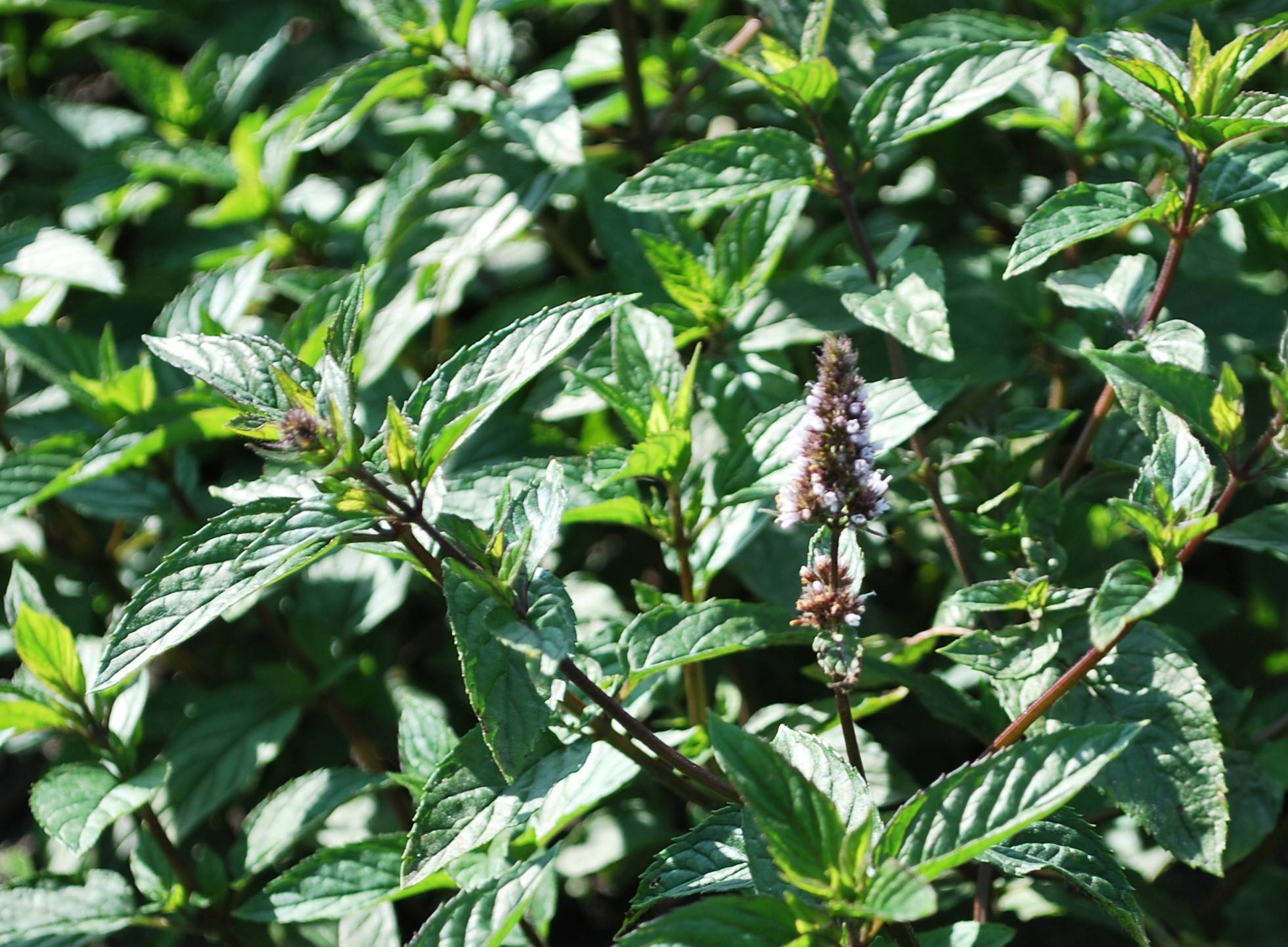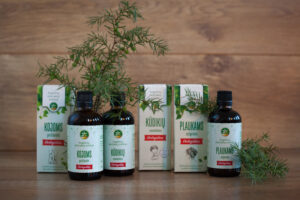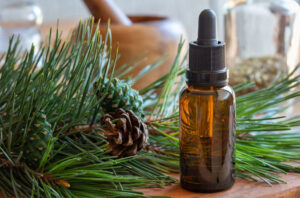Mint (Mentha piperita)
Plant Family Lamiaceae (Labiatae)
Synonyms
Mint, peppermint
Origin
Mint is a perennial herb that is a cultivated hybrid of other types of mint. Mint is naturalized in Europe and North America and is also cultivated throughout the world; it has been used as medicinal herb for thousands of years, particularly as an infusion for digestive disorders.
The essential oil comes primarily from the USA, although it is also produced in Europe, Russia, India and Morocco.The majority is used in the flavouring and toothpaste industries.
Extraction Method
Peppermint oil is steam- distilled from fresh flowering herb. It is necessary up to 40-50 kg of fresh Peppermint raw to obtain 1 kg of essential oil.
Nature of the Oil
Peppermint oil has a fresh, strong, mintly smell with a sweet undertone. It is a pale yellow or pale green liquid.
Perfumery Note – Middle to Top. The aroma lasts 1 or 2 days.
Peppermint scent is cooling refreshing, warming and stimulating. It is cool-smelling and create a feeling of freshness.
Main Constituents:
| (-)-Menthol | 32.0 – 49.0% |
| Menthone | 13.0 – 28.0% |
| (-)Menthyl acetate | 2.0-8.0% |
| Neomenthol | 2.0 – 6.0% |
| 1,8-Cineole | 3.0 – 8.0% |
| (6R)-(+) Menthofuran | 1.0 – 8.0% |
| Isomenthone | 2.0 – 8.0% |
| (1R)-(+)-beta-Plulegene | 0.5- 3.0% |
| (+)-Limonene | 1.0 – 3.0% |
| beta-Caryophyllene | 1.0-3.5% |
| (E)-Sabinene hydrate | 0.5 -2.0% |
| 3-Octanol | 0.1 -0.5% |
Properties
Analgesic, anti-inflammatory, antigalactagoguic (increases the flow of a mother’s milk), antimicrobial, antiseptic, antispasmodic, astringent, antiviral, carminative, cephalic, cholagogue, emmenagoguic (increases menstrual flow), expectorant, digestive, diuretic, febrifugal, hepatic, nervine, parasiticidal, stimulant, stomachic, sudorific, vermifugal.
Therapeutic Properties
Peppermint is cooling refreshing, warming and stimulating. The reason for this paradox is that the body increases circulation and warms up in response to the cooling action of peppermint applied to the skin. Peppermint adds a stimulating note to many massage and bath oil blends, but use only one or two drops or the smell will overpower any other oils used. It blends particularly well with eucalyptus, lavender, lemon, pine and rosemary.
The primary action of peppermint is on the digestive system, in particular the stomach. It encourages the easy absorption of food, and can be used for any symptom of a sluggish digestion, such as indigestion and flatulence. It also helps to stop regurgitation, sour risings, belching and hiccups.
Peppermint is a digestive antiseptic and can be used to treat gastric fevers, diarrhoea and food poisoning. It is also antispasmodic, and will relieve gastric spasm and colic. It is the main oil for treating aerophagy (swallowing of air). For digestive problems, peppermint combines well with oils of fennel and orange, and may be diluted in a base oil and massaged over the abdomen.
This oil can be used to treat nausea from any cause, including morning sickness and travel sickness. Peppermint aids the digestion of fats by encouraging the flow of bile, and has a detoxifying effect on the liver.
Aromatherapeutic Uses
Bruises, sprains and strains, swellings, ringworm, scabies, toothache, neuralgia, muscular aches and pains, respiratory disorders, halitosis, colic, indigestion, irritable bowel syndrome (oil taken internally in the form of peppermint capsules — dosage according to manufacturer’s instruc- tions), flatulence, mouth ulcers, mouth thrush, nausea, feverish conditions, colds and ’flu, fainting, headache, mental fatigue, migraine.
Psychological Profile
Peppermint is appropriate for times of transition, when one phase of life is completed and a new one about to begin, such as when changing schools or adapting to a new lifestyle. You may know that you need to leave a job or a relationship or move house, but do not yet know which direction to take. Using peppermint will help you to make a break with the past and strengthen your resolve and courage to take the next step.
Blends Well With
Essential oils of Clary sage, Eucalyptus, Geranium, Lavender, Lemon, Rosemary, Tea Tree. The oil is highly odoriferous, so use sparingly.
Our safety advice
Our oral and dermal restrictions are based on 8.0% menthofuran and 3.0% pulegone content, with limits of 0.2 mg/kg/day and 0.5% for menthofuran, and of 0.5 mg/kg/day and 1.2% for pulegone (see Constituent profiles, Chapter 14) . Peppermint oil should be avoided altogether in cases of cardiac fibrillation, and by people with a G6PD deficiency. This is a fairly common inherited enzyme deficiency, particularly in people of Chinese, West African, Mediterranean or Middle Eastern origin (Olowe & Ransome-Kuti 1980) . People with G6PD deficiency will typically have abnormal blood reactions to at least one of the following drugs, or will have been advised to avoid them: antimalarials; sulfonamides (antimicrobial); chloramphenicol (antibiotic); streptomycin (antibiotic); aspirin.
Cautions
Use in the lowest concentrations as it may irritate sensitive skin. Since the oil promotes menstruation, it is best avoided during the first trimester of pregnancy.
Other varieties
The Mints posses a great capacity to crossbreed, producing diverse forms and sub-varieties. We attempt to present an overview of the main mint groups and few unusual kinds:
• Mentha arvensis (Field Mint) main components menthol, menthone.
• Mentha piperita (pepermint) – the main ingredient menthol.
• Mentha piperita (Menthofurane chemotype) – main ingredient menthofurane.
• Mentha spicata (Spearmint), Mentha viridis (Nana or Moroccan mint) – main components L-carvone, limonene.
• Mentha pulegium L. (pennyroyal) – main components pulegone, nenthone, menthol.
• Mentha citrata Ehrh.(Orange Mint or Bergamot Mint) – main components linalool, linayl acetate, terpineol.
• Mentha longifolia L.(Wood Mint) – main components piperitone oxide, linalyl acetate.
The main component that gives essential oils a freshness and cooling effect is menthol. Other components like menthone or mentofuran give the mint an odor of sludge.
Spearmint oil (Mentha spicata) is milder and sweeter than peppermint but shares similar aromatherapeutic properties.
References
1. C. Wildwood “The Encyclopedia of Aromatherapy”, Vermont, Healing Arts Press, 1996
2. R. Tisserand, R. Young, E. M Williamson “Essential Oil Safety. A Guide for Health Care Professionals”, Churchill Livingstone ELSEVIER, 2014
3. S. Curtis “Essential Oils”, AURUM, London, 1996
4. R. Balz “The Healing Power of Essential Oils”, LOTUS LIGHT SHANGRI-LA, Twin Lakes, 1996
5. Л.ГДудченко, Г.П.Потебня, Н.А.Кривенко «Ароматерапия и аромамасаж», «Максимум», Киев, 1999





